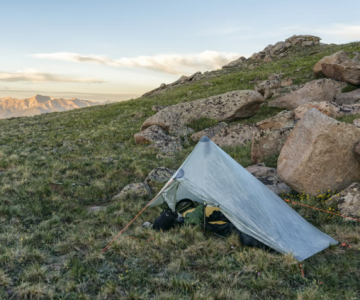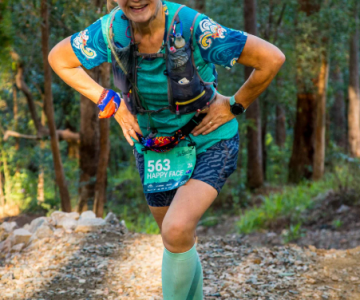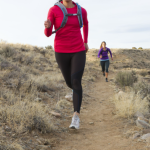Trail running is a thrilling outdoor activity that often requires minimal gear, but the right equipment can make all the difference in your comfort, safety, and overall performance. From shoes to snacks, here’s a breakdown of the essential items every trail runner should have on hand, along with a few extras for specific situations.
Apparel
Shoes
The right pair of shoes is critical when it comes to trail running. Trail runners are designed with more grip and durability than road shoes, allowing you to navigate mud, rocks, and uneven terrain. However, not all trail running shoes are the same. You’ll find options that range from minimalist models to more cushioned and supportive footwear. Be sure to select shoes that suit the terrain you plan to run on and the level of cushioning you need.
Top
When running on trails, moisture-wicking fabrics like synthetic materials or merino wool are a must to keep you dry. Depending on the weather, you may need just a simple t-shirt or a long-sleeve shirt for sun protection. In colder weather, layering is key—consider adding a light fleece or baselayer, which you can easily store in your pack when not in use.
Pants
Trail running pants or shorts depend largely on the weather. In warmer conditions, shorts with built-in liners help with moisture-wicking and preventing chafing. For cooler runs, tights will offer extra warmth and comfort. Tights are also a great option for layering under shorts, which is a popular choice among male runners. Always choose breathable, moisture-wicking materials over cotton to avoid discomfort.
Underwear and Socks
Choose activewear underwear and socks made from merino wool or synthetic fibers that dry quickly and reduce chafing. Pay attention to seams, as thick seams can cause irritation during long runs. Many runners opt for shorts with built-in mesh liners to minimize chafing.
Hat
A hat is essential for sun protection, especially if you’re running in an open area. Lightweight, running-specific caps often feature mesh panels for better ventilation, ensuring you stay cool. On cold days, consider pairing your hat with a Buff or beanie to keep your ears warm.
Sunglasses
Trail running can often lead you to exposed areas, and sunglasses protect your eyes from UV rays and low-hanging branches. UV exposure increases with altitude, so if you’re running in mountainous terrain, good sunglasses with polycarbonate lenses and UVA/UVB protection are vital for both comfort and safety.
Hydration
Vest or Pack
Carrying water is essential for staying hydrated on long runs. Depending on your route, you can use a handheld bottle, a waist pack, or a hydration pack with a reservoir. If your run is longer or in an area with few refill stations, a hydration pack is your best bet for carrying both water and other essential gear. Be sure to consider the pros and cons of both bottles and reservoirs before choosing the right system for you.
Safety and First Aid
Blister Kit
While you might not need a full first aid kit on a run, a blister kit is a lightweight and essential addition to your pack. It’s small enough to fit into any running vest or pack and can help treat common running injuries like blisters. For longer, more remote runs, consider packing a basic first aid kit and an emergency bivvy.
GPS, Map, and Compass
When venturing into unfamiliar territory, navigation tools are a must. A GPS watch, handheld GPS, or phone can assist with course tracking, but don’t rely solely on technology. It’s essential to carry a map and compass as well, as batteries can fail or signals can drop. Knowing how to use these tools can be a lifesaver if something goes wrong.
Headlamp
If there’s any chance you could be running in low light or after dark, a headlamp is crucial. Aim for a headlamp with at least 300 lumens for adequate visibility on the trail. Rechargeable lights are a great option to save on batteries and reduce waste. A good headlamp helps you safely navigate tricky terrain in the dark.
Extra Layer or Rain Jacket
Weather can change quickly, especially in higher altitudes. Having an extra layer or lightweight rain jacket in your pack ensures you’re prepared for sudden shifts in temperature or conditions. A jacket with a hood and ventilation zips offers the best versatility, allowing you to adjust your layers based on your comfort.
Nutrition
Electrolyte Supplement
Staying hydrated is not enough when running long distances. Electrolytes like sodium, potassium, and magnesium are essential to maintain muscle function. Consider carrying electrolyte supplements, especially if you’re refilling your hydration pack with plain water. Products like Nuun are popular and easy to use while on the go.
Food
For runs longer than 90 minutes, you’ll need to refuel to maintain your energy levels. Choose easily digestible snacks like gels or chews during short runs, and opt for bars or sandwiches (e.g., peanut butter and jelly) on longer outings. These will provide a steady release of energy to keep you going.
Balm/Lube
Chafing can occur during long runs due to repetitive friction between your skin and clothing. To prevent this, apply a lube like Body Glide or petroleum jelly to areas prone to chafing, such as your feet, thighs, or underarms. On longer runs, even places like your nipples may need a little extra protection.
Sunscreen
Sunscreen is a must for trail runners, especially if you’re running in open or higher-altitude areas where UV exposure is stronger. Look for waterproof and broad-spectrum sunscreen with physical blockers like zinc oxide or titanium dioxide. Choose a higher SPF if you have fair skin or are running in direct sunlight for extended periods.
Optional Gear
Sport Watch
A GPS running watch can be a great tool for monitoring pace, time, distance, and elevation, especially if you want detailed stats. If you’re serious about trail running, look for a watch that includes navigation features and a long battery life, as GPS can drain your battery quickly.
Trekking Poles
For rugged terrain or steep inclines, trekking poles can improve balance, reduce strain on your knees, and enhance your overall efficiency. If you decide to use them, make sure to practice with them before your run and consider how they’ll fit into your pack when not in use.
Conclusion
Trail running offers the freedom of nature with the thrill of physical challenge, but being properly prepared can make all the difference in your experience. Whether you’re new to trail running or a seasoned pro, these essentials will help you stay safe, comfortable, and well-equipped for whatever the trail throws at you.





